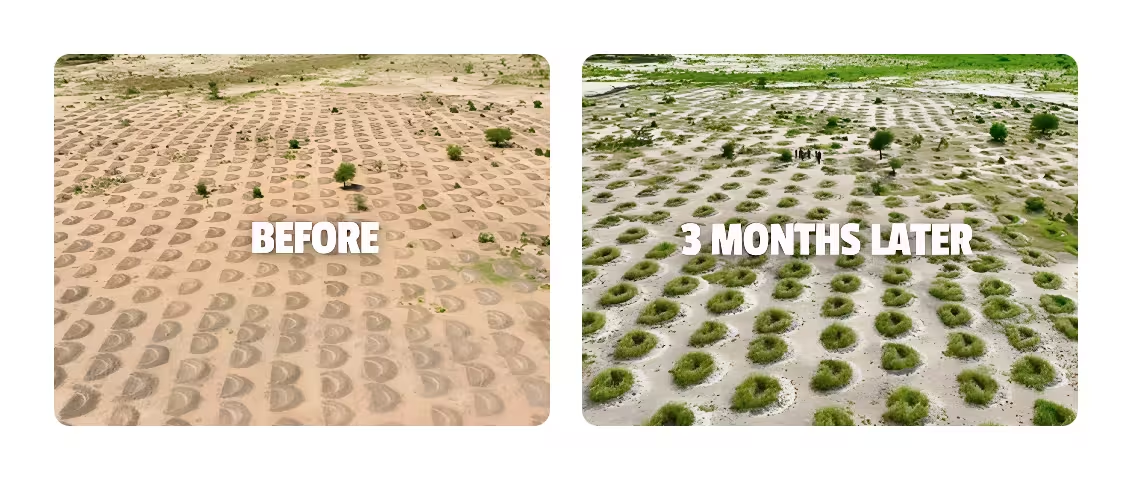

Every second, forests vanish, coral reefs bleach, and species disappear.
In the past 50 years alone, over 70% of all wildlife populations have declined (WWF Living Planet Report).
Plastic pollution chokes our oceans, while fertile soil turns to dust.
Most people want to do something, but traditional donations often feel abstract — you give, but never see what changes. That’s where nature restoration comes in.
Nature restoration means bringing back what’s been lost.
It’s about turning degraded land, damaged reefs, or polluted rivers into thriving ecosystems again.
Unlike conservation, which protects what still exists, restoration rebuilds what has disappeared (IUCN).
Examples of restoration in action:
Restoration creates real, tangible results. You can see a new tree grow, coral bloom again, or beaches cleared of plastic.
It’s one of the few environmental actions where progress is measurable — and emotional.
Every restored hectare proves that damage can be undone.
Healthy ecosystems absorb carbon, clean water, and support biodiversity — making them one of the most effective solutions for the climate crisis (IPCC).
Forests are the lungs of our planet. Reforestation goes beyond planting a single tree: it’s about rebuilding entire ecosystems.
Coral reefs cover less than 1% of the ocean floor yet host 25% of all marine life (UN Environmental Programme).
Around 19-23 million tons of plastic enter the oceans every year — and this could double by 2030 (UNEP – Plastic Pollution).
Up to 40% of the earth's ground is now degraded (World Economic Forum).
Kelp can grow up to 60 cm per day, making it one of the fastest-growing plants on Earth.
Both are essential, but restoration is how we repair the damage already done.
In Kenya’s coastal region of Lamu, Wetlands International is working with local communities and the Kenya Forest Service to restore the country’s largest mangrove ecosystem — home to 60% of Kenya’s mangrove forests.
This initiative supports Kenya’s pledge under the Africa Forest Landscape Restoration Initiative, which aims to rejuvenate 5.1 million hectares of degraded land. So far, over 32,000 hectares have already been restored.
Lamu’s mangroves are essential for coastal protection, carbon storage, and local livelihoods, yet they face ongoing threats from deforestation and climate change. By supporting restoration projects like this, you help bring back one of East Africa’s most valuable ecosystems — and strengthen the communities who depend on it.

Many people feel powerless about the climate crisis — but restoration turns that anxiety into action.
At Sumthing, you can:
It’s direct, measurable, and hopeful — a simple way to see the planet heal through your support.
Nature restoration is more than an environmental fix — it’s a mindset shift.
It says: We can repair what’s broken.
Every coral fragment, every seedling, every hectare restored proves that we’re not helpless — we’re rebuilding.
Together, we can bring back what’s been lost and give the planet the second chance it deserves.
Is nature restoration really effective?
Yes. Projects worldwide prove degraded ecosystems can recover when given time and care — often within a few years.
Why not just plant trees?
Planting helps, but restoration rebuilds entire systems — soil, species, water cycles, and biodiversity.
How do I know my impact is real?
Sumthing partners with verified restoration organizations and shows you progress directly through data and imagery.
How long before results appear?
Plastic removal and coral restoration show impact quickly; forests and soils need more time but deliver long-term change.